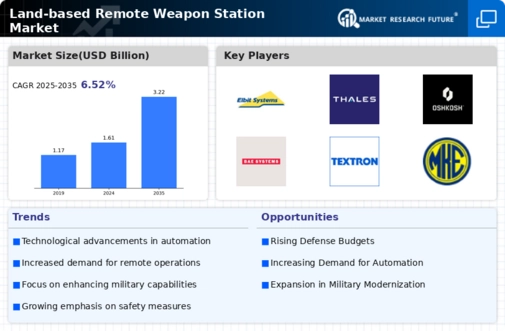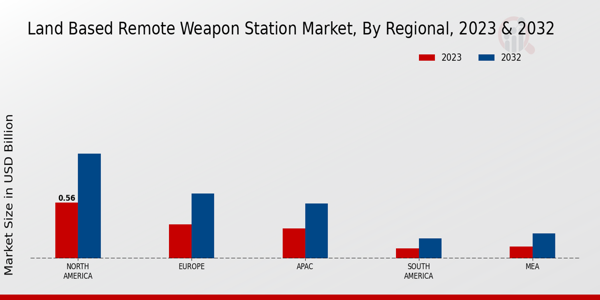The Land-based Remote Weapon Station Market has witnessed significant growth, driven by the increasing demand for enhanced security and defense capabilities in various regions. As nations invest in modernizing their military equipment, remote weapon stations have emerged as pivotal elements due to their ability to enhance the operational effectiveness of land forces while reducing the risk to personnel.
This market is characterized by fierce competition among leading defense contractors who strive to innovate and provide advanced technologies to meet the evolving needs of armed forces worldwide.
Companies are focusing on developing weapon systems that are not only capable of being remotely operated but also integrated with sophisticated targeting systems, sensors, and situational awareness tools to ensure a comprehensive response to threats.
Several players in the market are also entering into strategic partnerships and collaborations to expand their product offerings and improve market penetration.
Elbit Systems holds a prominent position in the Land-based Remote Weapon Station Market, recognized for its cutting-edge technology and robust solutions. The company has consistently focused on delivering systems that integrate advanced electronic warfare, precision targeting, and situational awareness capabilities.
Elbit Systems has a strong track record of successfully deploying its remote weapon stations across various military applications, enhancing the lethality and survivability of ground forces. The company's emphasis on innovation, coupled with its extensive experience in defense systems integration, has enabled it to establish a strong market presence.
Additionally, Elbit Systems has been proactive in addressing the specific needs of customers, customizing its solutions to enhance operational efficiency and effectiveness. The company's strategic investments in research and development further reinforce its commitment to leading in the remote weapon station domain.
Thales Group has made significant contributions to the Land-based Remote Weapon Station Market, positioning itself as a key player with innovative solutions tailored for land defense applications. The company's expertise lies in integrating advanced technologies like artificial intelligence, modular architecture, and advanced optics into its remote weapon systems.
Thales Group's product offerings are designed to enhance the operational capabilities of armed forces by providing precise aiming and targeting capabilities in diverse environmental conditions. The company's focus on operational flexibility and user-friendly interfaces ensures that its systems are highly adaptable to various tactical scenarios.
Thales Group also benefits from its global presence and partnerships with defense organizations, allowing it to leverage shared expertise and technological advancements. This collaborative approach positions Thales Group favorably within the market, as it consistently seeks to deliver products that meet the rigorous demands of modern warfare.

























Leave a Comment